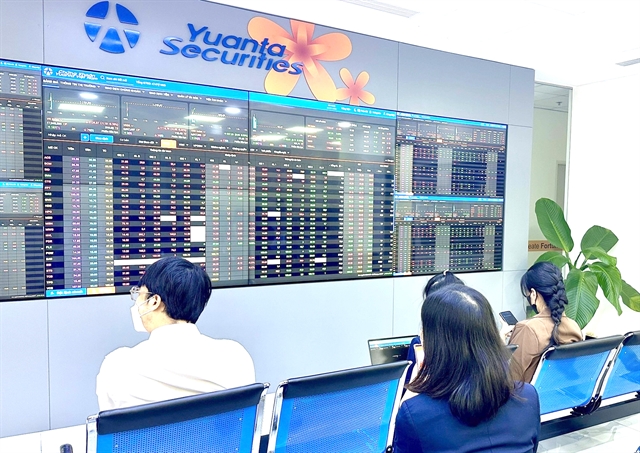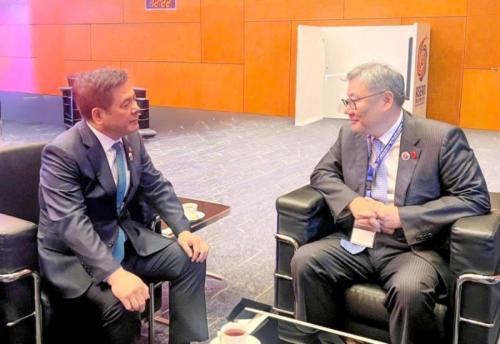New decree to unlock billion-dollar IPO wave on stock market
Analysts describe the move as a 'game changer' that could unlock a long-awaited wave of billion-dollar listings, boosting liquidity and bringing the country’s stock market closer to international standards.
HÀ NỘI — Việt Nam’s capital market is bracing for a surge in large-scale initial public offerings (IPOs).
This follows the introduction of Decree 245/2025/NĐ-CP, which has dramatically shortened the listing process from 90 days to just 30.
Analysts describe the move as a 'game changer' that could unlock a long-awaited wave of billion-dollar listings, boosting liquidity and bringing the country’s stock market closer to international standards.
The decree allows companies to file for IPO registration and listing approval simultaneously, rather than sequentially, as was previously required.
This reform, according to experts, not only streamlines administrative procedures but also reduces the time lag between capital mobilisation and trading, enabling enterprises to raise and deploy funds more efficiently.
The previous requirement for a 90-day waiting period after an IPO had long been cited as a deterrent for many large firms, particularly those planning to raise over a billion dollars.
Under the new rule, businesses can submit IPO and listing applications simultaneously, significantly accelerating the process of bringing shares to market.
The reform has immediately sparked optimism among major enterprises preparing for public offerings. Market participants view the shorter timeline as a breakthrough that will enable faster capital mobilisation and improved liquidity across the stock market.
Hoàng Nam, director of Research and Analysis at VietCap Securities, said that this wave of IPOs has received clear policy support.
"This time, the IPO wave benefits from a stronger legal framework," he said.
"In particular, Decree 245/2025 has shortened the time from IPO to listing from 90 days to 30 days, helping enterprises access capital more quickly.
Several major corporations have already started preparing for IPOs under the new framework.
Among them, VPBank Securities (VPBankS) has drawn special attention with its plan to issue 375 million shares at VNĐ33,900 per share, targeting proceeds of about VNĐ12.7 trillion (US$530 million). The offering would give the company a post-IPO valuation of more than $2.4 billion.
The firm aims to list its shares on the Ho Chi Minh Stock Exchange (HoSE) in December, roughly two months after the offering - a pace made possible by the newly shortened process.
Strengthening market efficiency
Experts believe that the revised Securities Law and Decree 245 are designed to make Việt Nam’s capital market more efficient, transparent and aligned with international practices.
The ability to co-file IPO and listing applications reduces procedural friction, cutting both administrative costs and time to market.
At the same time, the reform reflects Việt Nam’s ambition to elevate its stock market classification from 'frontier' to 'emerging' status. This milestone could attract billions of dollars in new institutional investment.
Analysts say that greater listing flexibility, combined with ongoing efforts to improve disclosure standards and corporate governance, will help diversify market supply and enhance investor confidence.
Nam from VietCap noted that investor appetite remains strong, especially for well-governed firms in sectors such as finance, infrastructure and energy.
Beyond regulatory streamlining, the decree also lays out mechanisms to ensure compliance and investor protection.
Companies failing to complete their listing within the 30-day window may face delisting risks, a provision aimed at maintaining discipline and transparency in the market.
The State Securities Commission (SSC) has emphasised that the shortened process should not compromise listing standards. Companies are still required to meet all financial, governance, and disclosure obligations before approval.
Market watchers note that Việt Nam’s financial system is increasingly shifting toward capital-market-based funding, reducing reliance on bank loans.
A more dynamic IPO market is therefore seen as essential to sustain economic growth and fund the country’s expanding corporate sector.
Analysts expect the total value of upcoming IPOs to reach several billion US dollars over the next few years as major corporations and state-owned enterprises take advantage of the new legal environment.
Source: BIZHUB/VNS
Photo: Photo courtesy of the company





